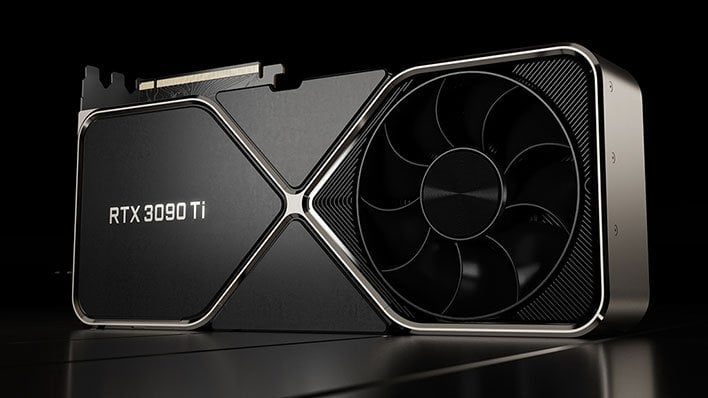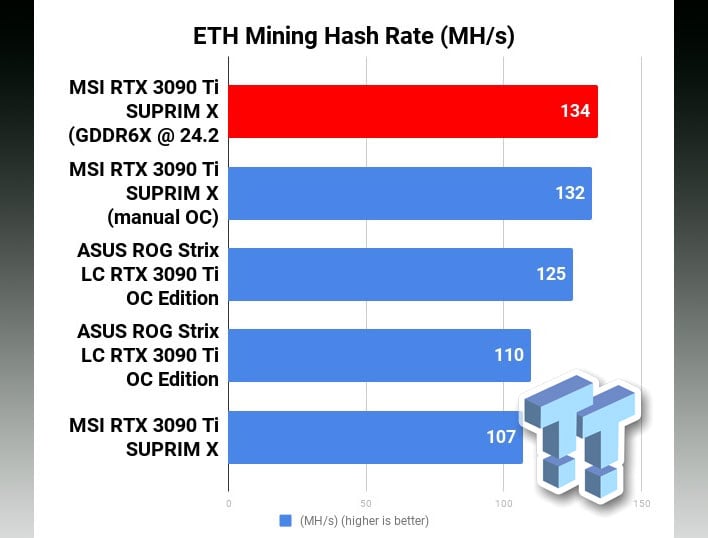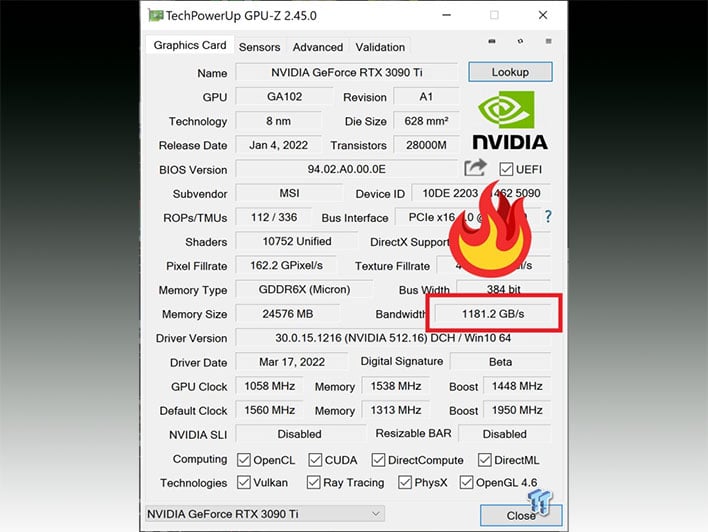NVIDIA GeForce RTX 3090 Ti Memory Gets Overclocked To 24Gbps For Insane Bandwidth

Still, some workloads, like Ethereum mining, are largely bound by memory bandwidth, and for those tasks more is always better. That's likely the thinking behind a test over at TweakTown where writer Anthony Garreffa took a pair of GeForce RTX 3090 Ti cards and overclocked the memory even further.
For some context, the memory on the GeForce RTX 3090 couldn't easily be overclocked because it used 1 GB packages that necessitated placement on both sides of the card. The upgraded "Ti" card—that's "tee aye" not "tie"—uses newer 2 GB packages, which means all twelve DRAM ICs can be underneath a fat cooler on the front side of the card.
Ironically, using the ASUS ROG Strix LC RTX 3090 Ti, factory-fitted with a liquid cooler, he had much less luck, only achieving some 23.4 Gbps. That's still a significant upgrade over the stock 21 Gbps, but a fair bit behind the performance of the MSI card.
In the site's temperature testing, they found unusually high temperatures on the ASUS card's memory compared to the GPU core or the VRMs, suggesting that the DRAM cooling on the ROG Strix LC variant isn't quite as good as on the MSI variant.

That's an absolutely insane performance for a single GPU, although we probably wouldn't want to run our $2000 graphics card at the razor's edge of stability for the extended periods that crypto-currency mining mandates, even considering the reasonable temperatures that the cards kept in TweakTown's testing.


